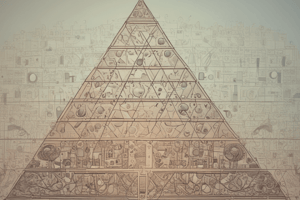Podcast
Questions and Answers
What are the three main logical operators used in creating boolean expressions?
What are the three main logical operators used in creating boolean expressions?
The three main logical operators are AND (&&), OR (||), and NOT (!).
What is the purpose of logical operators in boolean expressions?
What is the purpose of logical operators in boolean expressions?
Logical operators are used to combine multiple boolean expressions and determine the overall truth value of the combined expression.
How are logical operators represented in boolean expressions?
How are logical operators represented in boolean expressions?
Logical operators are represented by symbols: AND (&&), OR (||), and NOT (!), and are used to connect two or more boolean values or expressions.
Flashcards are hidden until you start studying
Study Notes
Boolean Expressions and Logical Operators
- The three main logical operators used in creating boolean expressions are: AND, OR, and NOT.
- The purpose of logical operators in boolean expressions is to combine conditions to form a logical test that evaluates to either TRUE or FALSE.
- Logical operators are represented in boolean expressions using symbols: AND is represented by ∧, OR is represented by ∨, and NOT is represented by ¬.
Studying That Suits You
Use AI to generate personalized quizzes and flashcards to suit your learning preferences.




